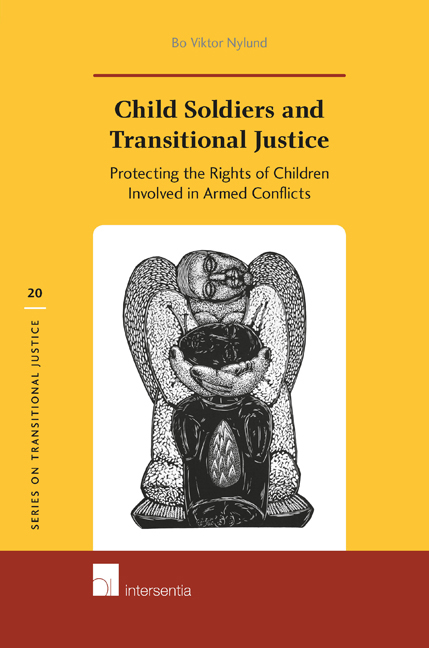 Child Soldiers and Transitional Justice
Child Soldiers and Transitional Justice Published online by Cambridge University Press: 12 December 2017
“When we first came back, the people did not want us. But now it is OK. Now it is good. They like the projects we are doing for the village.”
INTRODUCTION
Reparatory justice is an integral part of transitional justice and builds on the obligation of states to make restitution whenever international legal obligations have been violated. The Basic Principles and Guidelines on the Right to a Remedy and Reparation, adopted by the UN General Assembly in 2006, form the basis of what today is considered a framework for reparations – defining that victims of human rights and humanitarian law violations have the right to “adequate, effective, prompt and appropriate remedies, including reparation.”
In addition:
Restitution should, whenever possible, restore the victim to the original situation before the gross violations of international human rights law or serious violations of international humanitarian law occurred. Restitution includes, as appropriate: restoration of liberty, enjoyment of human rights, identity, family life and citizenship, return to one's place of residence, restoration of employment and return of property.
The Basic Principles and Guidelines further state that compensation should consider the circumstances for each case and be provided in proportion to the severity of the violation.
Reparatory justice includes many dimensions and forms: reparations, services, damages, remedies, redress, restitution, compensation, rehabilitation, official apology, tribute. In transitional contexts, reparatory justice enables recognition of individual rights violations and the harm that followed, and the fact that someone did wrong, in addition to a commitment for non-repetition of the crime. This element looks back at what the violations were, and even if it is not the same actor who repairs, the obligation remains. It also looks forward in a political and transitional sense, repairing so as to be able to move forward.
Key legal questions that are covered in this chapter include:
– What does reparatory justice mean in the context of recruitment and use of children in armed conflicts? How can we ensure that reparations are in the best interests of the child?
– What legal protection is accorded to children ensuring that this element of transitional justice is accorded the necessary importance?
– What lessons have been learned from reparatory justice processes relevant to the recruitment and use of children, and how can those inform how this element fits into a broader transitional justice approach?
– Who repairs?
To save this book to your Kindle, first ensure [email protected] is added to your Approved Personal Document E-mail List under your Personal Document Settings on the Manage Your Content and Devices page of your Amazon account. Then enter the ‘name’ part of your Kindle email address below. Find out more about saving to your Kindle.
Note you can select to save to either the @free.kindle.com or @kindle.com variations. ‘@free.kindle.com’ emails are free but can only be saved to your device when it is connected to wi-fi. ‘@kindle.com’ emails can be delivered even when you are not connected to wi-fi, but note that service fees apply.
Find out more about the Kindle Personal Document Service.
To save content items to your account, please confirm that you agree to abide by our usage policies. If this is the first time you use this feature, you will be asked to authorise Cambridge Core to connect with your account. Find out more about saving content to Dropbox.
To save content items to your account, please confirm that you agree to abide by our usage policies. If this is the first time you use this feature, you will be asked to authorise Cambridge Core to connect with your account. Find out more about saving content to Google Drive.